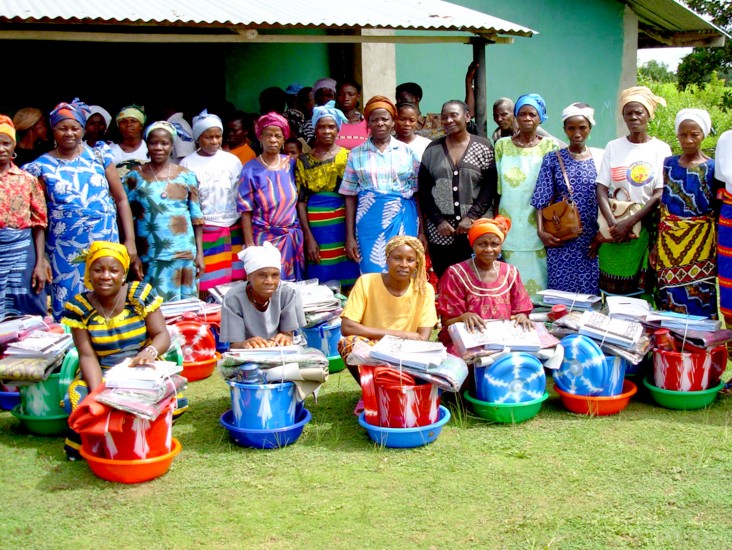
During the 14-year civil conflict in Liberia, the health system virtually collapsed. The health system’s fraglity coupled with the difficulty women face in getting to health facilities in emergencies due to no roads or means of transportation in largely rural Liberia, has led to one of the highest rates of maternal mortality in the world: 994 deaths per 100,000 live births.
From 2005 - 2009, USAID improved conditions for expectant mothers and infants in Liberia, by working with traditional midwives - the front lines of childbirth in rural areas. Home birth is a tradition in Liberia - 63% of women deliver outside of a health facility. Recognizing the culture of home birth and knowledge among traditional midwives, USAID worked with the American College of Nurse-Midwives and Liberian Ministry of Health and Social Welfare to develop home-based life-saving skills training. The training utilizes traditional midwives’ respected roles in their communities and shifts the focus of their work to encouraging birth preparedness, recognizing and referring complications, and providing appropriate emergency care.
Training occurs through community meetings where traditional midwives, expectant mothers and fathers, and community leaders participate. The training employs storytelling, case histories, discussion, role-play, and demonstration to cover prenatal and antenatal care topics.
Florence Allen, a trained traditional midwife in Bong County, used her newly learned skills when she delivered a baby who had trouble breathing. “Before the training, I used to wrap up babies with trouble breathing - and tell the mother that she had a still birth,” she said. In a post-training case, Florence was prepared, “I rubbed the back two times, but the baby was not crying plenty still. So I put my mouth over the baby mouth and nose and I breathed 30 times.” The baby lived.
The link the training forms between traditional midwives and local health facilities is essential. Certified midwives from clinics serve as trainers and connect with traditional midwives. After the training, certified midwives conduct outreach visits and hold monthly meetings to collect reports, share experiences, discuss problems, replenish supplies, and reinforce training. Since the training, many traditional midwives have begun escorting their patients to clinics for necessary care.
Progress is apparent - in Bong County, facility deliveries increased from 9% to 23% in 2008. The training was adopted nationally in December 2007 to aid in Liberia’s goal of reducing maternal mortality by 15% by 2011.







Comment
Make a general inquiry or suggest an improvement.